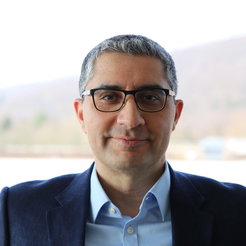
Ramin Golestanian
Max Planck Institute for Dynamics and Self-Organization, Göttingen, Germany
Guest Speaker / Affiliated with MaxSynBio

Ramin Golestanian is director at the Max Planck Institute for Dynamics and Self-Organization in Göttingen, Germany, heading the department of Living Matter Physics. As a theoretical physicist he is a keen supporter of the kind of biophysics that considers biological systems as living matter and aims to pursue new physical questions in these systems. He focusses on a wide range of theoretical research topics describing the dynamics of living systems over several orders of magnitude from a physical point of view. He has a broad interest in various aspects of nonequilibrium statistical physics, soft matter, and biological physics. He is distinguished for his work on active matter, and in particular, for his role in developing synthetic microscopic swimmers and active colloids.
Max Planck Institute for Dynamics and Self-Organization, Göttingen, Germany
Keynote presentation: Designing Motility and Signaling from the bottom up
Session "Signalling & Motility", Tuesday, 1 Dec 2020, 20:00 - 20:30 CETAbstract: There are many ways to study life, and one that is particularly appealing to physicists is regarding it as self-organized active soft matter that is away from equilibrium ``just the right way’’. In this talk, I will discuss this notion, and provide a number of examples of how we can begin to put together simple systems - from basic ingredients that we fully understand - that would exhibit the kind of active behaviour we find in living systems. In particular, I will discuss a generic mechanism by which such chemically-active particles, be it cells or enzymes or engineered synthetic colloids, can "sense" each other and ultimately self-organize in a multitude of ways. A peculiarity of these chemical-mediated interactions is that they break action-reaction symmetry: for example, one particle may be repelled from a second particle, which is in turn attracted to the first one, so that it ends up "chasing" it. Such chasing interactions allow for the formation of large clusters of particles that "swim" autonomously. Regarding enzymes, we find that they can spontaneously aggregate into clusters with precisely the right composition, so that the product of one enzyme is passed on, without lack or excess, to the next enzyme in the metabolic cascade.
